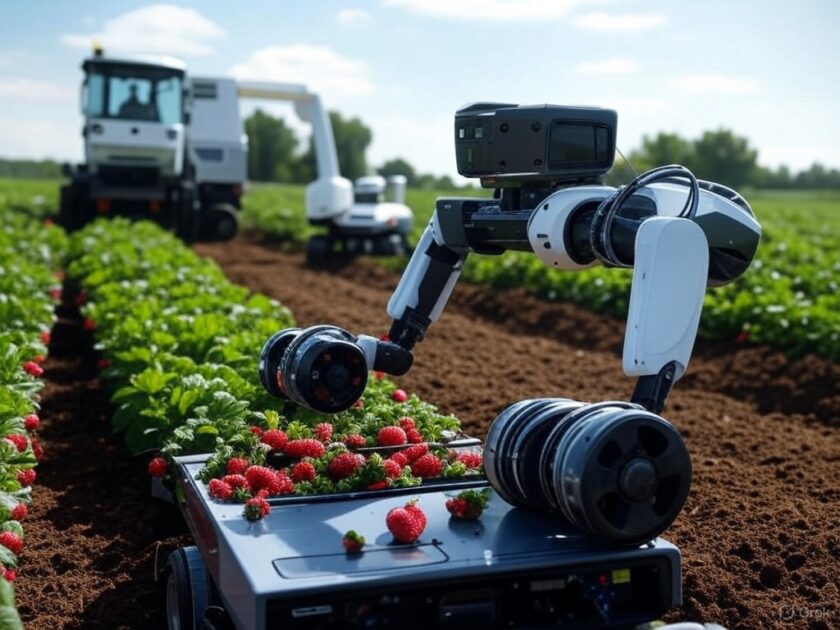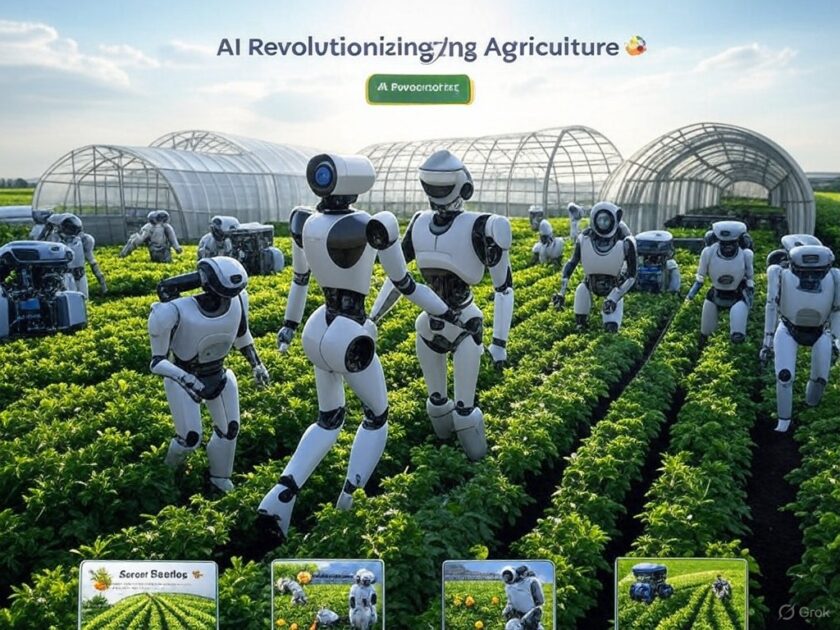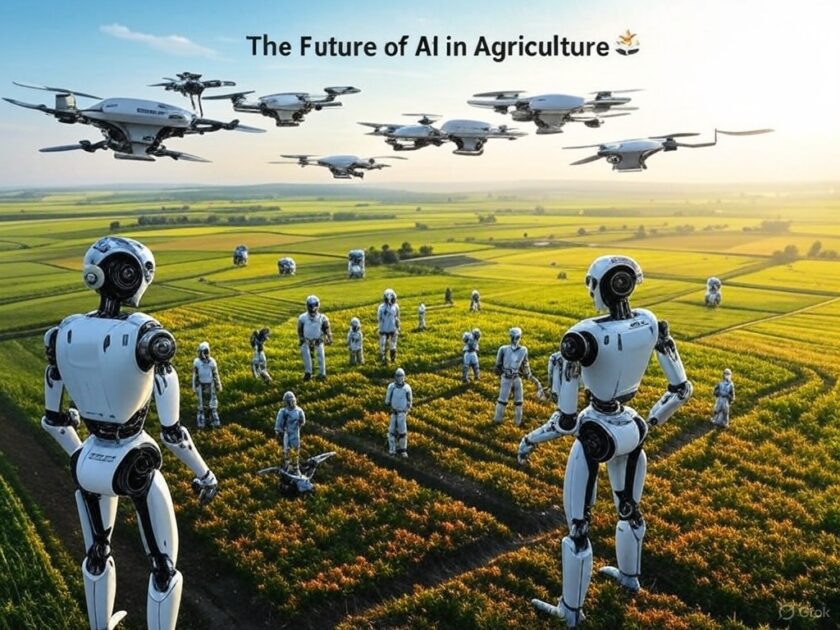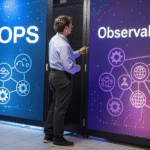AI in Agricultural Robotics: Revolutionizing Modern Farming

Agriculture is undergoing a major transformation with the help of Artificial Intelligence (AI) and robotics. Farmers worldwide are using AI-powered robots to increase efficiency, reduce labor costs, and promote sustainable farming practices. AI technology is enabling smarter decision-making, enhancing productivity, and reducing environmental impact.

AI in agricultural robots is revolutionizing farming by enabling tasks like planting, harvesting, crop monitoring, and weed control with greater precision and efficiency. These advancements lead to increased yields, reduced environmental impact, and more sustainable agricultural practices.
Exploring AI in Agricultural Robotics
1. Increased Efficiency and Productivity 🌼
AI-powered agricultural robots perform tasks faster and with greater accuracy than traditional methods. This leads to higher yields, reduced labor costs, and improved overall efficiency. Automation allows farmers to focus on higher-level decision-making instead of manual labor.
2. Precision Farming 🌱
AI algorithms analyze data from sensors and cameras to optimize resource usage, such as water, fertilizers, and pesticides. This ensures that each plant receives the exact amount of nutrients and care needed, improving crop growth while reducing waste.
3. Crop Monitoring and Health Analysis 🌾
AI-driven robots continuously monitor crops using advanced imaging, detecting early signs of disease, pest infestations, and nutrient deficiencies. Timely interventions help prevent crop loss and maximize yields.
4. Weed Control 🌿
AI-powered robots differentiate between crops and weeds, enabling precise weed removal. This reduces the need for herbicides, minimizing environmental impact while promoting healthier crops and soil.
Examples of AI in Agricultural Robots
AI is powering some of the most advanced farming robots today. Here are some notable examples:
🌿 Harvest CROO: Specializes in robotic strawberry harvesting, automating the picking process to improve efficiency.
🌱 Blue River LettuceBot2: A tractor attachment that uses AI to thin out lettuce fields and prevent herbicide-resistant weeds.
👩🌾 Iron Ox: An AI-powered agricultural system that fully automates farming processes, from planting to harvesting.
🔥 Carbon Robotics LaserWeeder: Uses AI and computer vision to identify and eliminate weeds without herbicides.
💪 EcoRobotix: Develops solar-powered autonomous robots that use AI to detect and remove weeds without the use of chemicals.
🌼 AgriBot: A high-tech harvesting robot designed for efficient fruit and vegetable collection. Visit Site
How AI Robots Are Used in Agriculture
AI-powered agricultural robots help farmers with various tasks, from planting to harvesting. Some key applications include:
1. Automated Weed Control 🌱
AI-driven machines like Carbon Robotics’ LaserWeeder identify and eliminate weeds using high-powered lasers. This reduces the need for chemical herbicides, making farming eco-friendlier and more cost-effective.
2. Precision Spraying 🌿
AI-powered sprayers such as Solix Ag Robotics analyze plant health and spray pesticides or fertilizers only where needed. This prevents overuse of chemicals, reducing environmental damage and improving soil health.
3. Autonomous Tractors 🌼
Companies like John Deere have introduced driverless tractors equipped with AI, sensors, and GPS technology. These tractors perform soil preparation, planting, and pest control without human intervention, increasing efficiency and reducing labor costs. Visit Site
4. Smart Soil Analysis 👩🌾
Ellie the Robot Dog, developed by the University of Plymouth, is equipped with AI-powered sensors that analyze soil conditions, detect nutrient levels, and identify chemical contaminants. This data enables farmers to optimize their crop management practices. Visit Site
5. Crop Monitoring and Yield Prediction 🌟
AI-powered drones and sensors continuously scan fields to detect diseases, nutrient deficiencies, and irrigation needs. This real-time analysis helps optimize resource use and prevent crop losses. Visit Site
6. Robotic Harvesting 🌾
AI robots like Octinion’s Rubion can pick delicate fruits such as strawberries without causing damage. This improves efficiency and reduces labor dependency. Visit Site

Which Countries Are Using AI in Agriculture?
AI is making waves in agriculture worldwide. Many countries are adopting AI technologies to improve farming efficiency and address labor shortages. Some leading countries using AI in agriculture include:
-
- United States: AI-driven machinery and sensors are commonly used in large-scale farms.
-
- Japan: Robotics and AI are helping Japan tackle its labor shortage in agriculture.
-
- China: AI is being utilized for improving crop management and food production.
-
- Netherlands: The Netherlands is pioneering smart farming techniques with the help of AI and robotics.
-
- India: AI in India is helping small-scale farmers with crop disease detection, weather forecasting, and more efficient irrigation.
AI Applications in Agriculture
AI is applied in different areas of farming to improve efficiency and sustainability:
-
- Precision Agriculture: AI algorithms analyze data from drones, sensors, and satellites to optimize farming practices.
-
- Autonomous Tractors: Self-driving tractors equipped with AI navigate fields and perform farming tasks with minimal human supervision.
-
- Automated Spraying Systems: AI-driven drones and machines spray pesticides and fertilizers with high accuracy, reducing chemical usage.
-
- Smart Greenhouses: AI regulates temperature, humidity, and lighting in greenhouses, ensuring optimal conditions for plant growth.
-
- Livestock Monitoring: AI-based systems track animal health, detect diseases, and improve breeding strategies.
Benefits of AI in Agriculture 🌾
AI in agriculture is bringing about numerous benefits that contribute to a more efficient, sustainable, and profitable farming system:
1. Increased Efficiency and Productivity 📈
AI robots are able to complete tasks more quickly and with greater precision than human workers. This leads to increased yields and higher productivity, making farms more efficient.
2. Reduced Labor Costs 💸
Automating farming tasks means farmers can reduce their dependence on manual labor, saving money on wages and training costs.
3. Optimized Resource Usage 🌍
AI helps farmers optimize the use of resources like water, fertilizers, and pesticides, ensuring that crops get exactly what they need and minimizing waste.
4. Improved Crop Quality and Quantity 🌱
With AI monitoring crop health in real-time, farmers can identify issues early and take action to ensure high-quality crops are produced.
5. Sustainability and Eco-Friendliness 🌎
AI systems reduce chemical usage by accurately targeting areas that need attention. This leads to less environmental pollution and promotes sustainable farming practices.
The Future of AI in Agriculture
As we move into the future, the role of AI in agriculture will only continue to grow. With the ongoing development of smarter robots and algorithms, farmers will be able to make data-driven decisions that improve yields, reduce waste, and foster sustainable practices. Here are a few key aspects of the future of AI in farming:
1. Increased Automation and Efficiency 🚜
The automation of agricultural processes will become more widespread. AI robots will be able to handle tasks like planting, harvesting, and monitoring crops much more efficiently than human workers. As robots become more advanced, they will work faster, more accurately, and at a lower cost, allowing farmers to produce more with fewer resources.
2. AI-Powered Precision Farming 🎯
With AI’s ability to process vast amounts of data, precision farming will reach new heights. Sensors, cameras, and satellite imagery will collect data on weather, soil conditions, crop health, and more. AI algorithms will then analyze this data to optimize irrigation, fertilization, and pest control, making farming more resource efficient.
3. Sustainable Farming Practices 🌱
In the future, AI will play a crucial role in promoting sustainable farming practices. AI systems will help minimize the use of pesticides, herbicides, and water by making farming practices more targeted and efficient. For example, autonomous weeders can identify and remove weeds without harming crops, while AI-powered irrigation systems can reduce water waste by precisely monitoring moisture levels.
4. Smart Greenhouses and Indoor Farming 🏡
Indoor farming and smart greenhouses will become more prominent, with AI controlling environmental conditions like temperature, humidity, and lighting. These systems will allow farmers to grow crops year-round, using less space and fewer resources than traditional farming methods.

Pros and Cons of AI in Agricultural Robotics ✅❌
Pros
✔ Increased Efficiency: Tasks are performed faster and more accurately, improving productivity.
✔ Reduced Labor Costs: Automation reduces the need for manual labor.
✔ Better Crop Health: AI allows for precise monitoring and early detection of problems.
✔ Environmentally Friendly: Minimizes herbicide and pesticide use.
✔ Resource Optimization: Optimizes the use of water, fertilizer, and other resources.
Cons
❌ High Initial Investment: The cost of implementing AI technology can be a barrier for small farmers.
❌ Technical Skills Required: Farmers must learn to operate and maintain advanced systems.
❌ Risk of System Failures: As with any technology, technical glitches can occur.
❌ Limited Accessibility: Not all regions or farmers have access to AI-powered tools.
The Future: A New Era for Farming 🌾
AI is setting the stage for a future where farming is smarter, more efficient, and sustainable. As technology continues to evolve, the role of robots in agriculture will become even more critical. With the potential to increase food production while reducing environmental impact, AI-powered robots are helping create a more sustainable food system for the world.
Frequently Asked Questions (FAQ):
How are AI robots used in agriculture?
Answer : AI robots assist in planting, harvesting, crop monitoring, and weed control, improving efficiency and sustainability.
Which AI application is most used in agriculture?
Answer : Precision farming, weed control, and autonomous tractors are the most common AI applications.
What are the benefits of AI in agricultural robotics?
Answer: AI improves productivity, reduces labor costs, enhances sustainability, and optimizes resource usage.
Can AI help small farmers?
Answer : Yes, AI-powered mobile apps and affordable automation tools are helping small farmers improve their productivity.
What challenges does AI face in agriculture?
Answer : High costs, lack of technical knowledge, and limited infrastructure in rural areas are some challenges.



